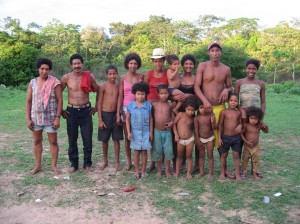By Jack Hewson, orginally published at CIFOR’s Forests News

Land tenure rights have been widely considered as key to improving environmental governance. In the Brazilian state of Pará, and in Lowland Bolivia laws have been enacted taking into account the needs of local and indigenous communities. So how successful have the laws been?
A new study compares the processes of land regularization in the regions and the authors found that tenure security on its own has not necessarily resulted in better environmental governance. Much also depends on the social and political conditions.
TWO COUNTRIES, DIFFERENT OUTCOMES
“Interestingly, in both Bolivia and Pará there was a very intense process of agricultural frontier expansion by different actors on different frontiers, and the policy goals to address any problems were relatively similar, with emphasis given to regularizing tenure rights,” says Pablo Pacheco, one of the authors of the study and a senior scientist at the Center for International Forestry Research (CIFOR) . “But the way in which the two countries have sought to have achieve this is very different.”
In Lowland Bolivia, priority was given to regularize rights in lands claimed by individuals — from smallholders to large-scale landholders — and communities and indigenous people. The identification of public lands, which are often forests, occurred only after the recognition of collective and individual rights. This led to an important rush to occupy public lands, much of which ended up in private hands.
The authorities in Pará, in contrast, marked out “a mosaic” of conservation units, and made the rights of indigenous people a priority. Only after that were tenure rights granted to traditional communities and smallholders. Yet, the claims of individual landholders have not been solved, which is one of the main obstacles to full implementation of Brazil’s environmental policy.
Put simply, Bolivia approached land regularization from an agrarian perspective, while Pará adopted a more conservationist approach.
“Perhaps unsurprisingly better environmental governance has been achieved in Brazil as a consequence, yet improved social distribution of land has been achieved in Bolivia,” says Pacheco. “Both regions have experienced a different mix of failure and success.”
The approach to tenure regularization has been key to both stories, but Pacheco stresses that it is not the only factor. Clarifying ownership of land was expected to settle land conflict, reduce pressures on forests, and promote more optimal land uses — in line with economic assumptions.
Policy makers believed that clarifying tenure rights would also contribute to stabilizing agricultural expansion — in line with institutional perspectives. But the actual processes did not yield such clear outcomes.
Read the full blog at CIFOR’s Forests News











